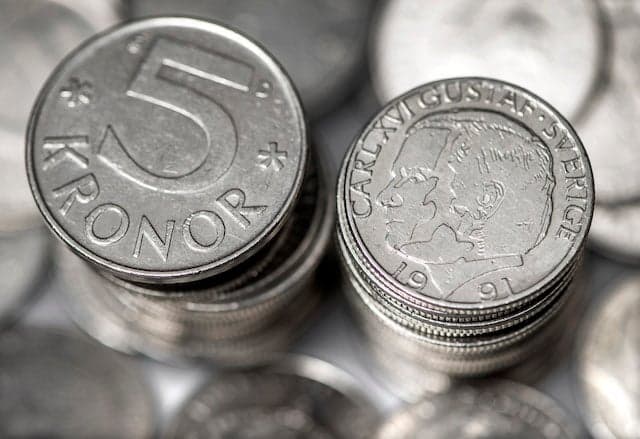Check your wallet – this Swedish money is useless as of today

Sweden's banknote and coin changeover is nearly completed, and June 30th was the last day to use the remaining old notes and coins for payments.
Sweden's on-going banknote and coin changeover, which began in 2015, has entered its final phase. The last of the remaining old coins, as well as the old 100-kronor and 500-kronor, are invalid as of July 1st.
But far from all shops are equipped to deal with the change, and the Swedish Trade Federation (Svensk Handel) warns that not enough new coins are in circulation yet, reports Aftonbladet.
"I don't think the shops will have enough coins on Saturday and in the nearest future," payments expert Bengt Nilervall at Svensk Handel told Aftonbladet.
Sweden's central bank, the Riksbank, is aware of the risk.
"Our ambition was to give all parties as much information as possible so this would not happen. But now we will have to adjust to the situation," Riksbank spokesperson Christina Wejshammar told Aftonbladet.

These old 500-kronor and 100-kronor are invalid as of July 1st. Photo: Claus Gertsen/Scanpix/TT
If you have bunch of old 1-, 2- and 5-kronor coins lying about, these can still be deposited in a bank until August 31st, 2017.
The old 100-kronor and 500-kronor notes are also invalid in shops as of July 1st, but have a later bank deposit deadline, on June 30th, 2018.
A map where you can find your nearest coin-deposit location is available at Myntkartan.se.
Comments
See Also
Sweden's on-going banknote and coin changeover, which began in 2015, has entered its final phase. The last of the remaining old coins, as well as the old 100-kronor and 500-kronor, are invalid as of July 1st.
But far from all shops are equipped to deal with the change, and the Swedish Trade Federation (Svensk Handel) warns that not enough new coins are in circulation yet, reports Aftonbladet.
"I don't think the shops will have enough coins on Saturday and in the nearest future," payments expert Bengt Nilervall at Svensk Handel told Aftonbladet.
Sweden's central bank, the Riksbank, is aware of the risk.
"Our ambition was to give all parties as much information as possible so this would not happen. But now we will have to adjust to the situation," Riksbank spokesperson Christina Wejshammar told Aftonbladet.

These old 500-kronor and 100-kronor are invalid as of July 1st. Photo: Claus Gertsen/Scanpix/TT
If you have bunch of old 1-, 2- and 5-kronor coins lying about, these can still be deposited in a bank until August 31st, 2017.
The old 100-kronor and 500-kronor notes are also invalid in shops as of July 1st, but have a later bank deposit deadline, on June 30th, 2018.
A map where you can find your nearest coin-deposit location is available at Myntkartan.se.
Join the conversation in our comments section below. Share your own views and experience and if you have a question or suggestion for our journalists then email us at [email protected].
Please keep comments civil, constructive and on topic – and make sure to read our terms of use before getting involved.
Please log in here to leave a comment.